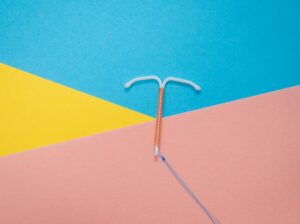Amelia Hopkinson
Contraception is usually the hottest topic in a school sex education lesson. However, you’re rarely taught how to make an informed decision about which contraception you might want to use.
What Is Contraception?
Contraception is defined as the act of preventing pregnancy.
Contraception gives the individual control over their reproductive system, allowing them control over if, or when, they want to become pregnant. Some methods of contraception can also be used to help prevent sexually transmitted infections (STIs).
Information on contraception and sexual reproduction is fundamental knowledge that everybody deserves to be taught properly. Having access to contraceptive methods leads to the prevention of unintended pregnancies, which helps lower the need for unsafe abortions. It also prevents the spread of STIs, promoting the sexual well-being of society.
https://www.tiktok.com/@swbhnhs/video/7205977505172344070?q=sexual%20health%20contraception&t=1698410662986
What are the different types of contraception?
I’m sure most of us have experienced the horror of watching a stranger pop a condom onto a poor, unsuspecting banana during a school sex ed lesson (I hope that wasn’t just my school…).
However, thanks to the wonders of modern-day medicine, there are many other methods of contraception available to us.
Here’s a rundown of the most common contraceptive methods, their pros and cons, and how they may impact your body, brain and lifestyle.
Condoms
Let’s start with the most well-known method. You have probably heard of a condom. They are made of thin latex, also known as rubber, and are designed to completely cover the penis so that no fluids are transferred between partners during sex.
They are the only contraceptive method which protects you from STIs as well as pregnancy. There are no hormones involved with the use of condoms, and they are more than 98 per cent effective if used without mistakes.
You can access them for free from sexual health services, as well as some GPs. They are also available to buy from pharmacies, shops and online.
A new condom must be used each time you have sex or during sex if you switch between anal and vaginal penetration.

The Coil or Intrauterine Device (IUD)
It’s always nice to have options, and with this contraceptive method, there are two different types of coil for you to choose from!
Non-hormonal coil
The non-hormonal (copper) coil is a small, plastic T-shaped device which contains copper.
This device is placed into the uterus through the vagina by a specially trained nurse or doctor. It prevents pregnancy by stopping the sperm from surviving inside the body (sorry, not sorry, sperm!)
No hormones are involved, and they are more than 99 per cent effective. A non-hormonal coil can last anywhere from five to ten years, and the specialist fitting it will let you know when you need to replace it. The IUD can also be used as an emergency method of contraception.
Hormonal coil
The hormonal coil looks the same. However, it contains the hormone progesterone, which controls fertility. This device is inserted in the same way as the copper coil.
A hormonal coil is suitable for making heavy periods less painful and lighter. It can also help with low and anxious moods.
This method is just as effective and lasts for up to five years. It prevents pregnancy by thickening the mucus around the cervix, which makes it more difficult for sperm to reach the egg. The coil makes the womb’s lining thinner, so a fertilised egg does not implant.

The Pill
Again, there are two types of contraceptive pills that you can take: the combined pill and the progestogen-only pill.
Combined pill
First, we have the most common: the combined pill. It is often simply referred to as ‘the pill’ and contains both progestogen and oestrogen (hormones). You take this pill once a day, usually pausing for a seven-day break once a month, where you will then have a withdrawal bleed. This pill needs to be taken around the same time every day.
The combined pill prevents pregnancy by stopping the ovaries from releasing eggs into the uterus. It also makes the uterus lining thinner so that a fertilised egg is not able to implant. The combined pill is over 99 per cent effective if taken correctly and can help with low and anxious moods. This method requires a prescription from a doctor or nurse.

Progestogen-only pill
Second, we have the progestogen-only pill, which is often referred to as the ‘mini-pill’. This pill prevents pregnancy by using the progestogen hormone.
It thickens the mucus from your cervix, which makes it difficult for the sperm to reach an egg. The progestogen pill can also stop your ovaries from releasing an egg.
This pill is over 99 per cent effective if taken correctly and can help with low and anxious moods. It must be taken around the same time every day and requires a prescription from a doctor or nurse.
The mini pill is an excellent option for people who can’t use contraception that contains oestrogen.
Contraceptive Implant
The implant is a small plastic rod inserted just under the skin in the upper arm. It prevents pregnancy by releasing the hormone progestogen.
The release of progesterone stops ovulation and thickens the mucus around the cervix, making it harder for sperm to get through.
It also thins the womb’s lining, making a fertilised egg less likely to implant.
It is more than 99 per cent effective and can help with low or anxious moods. They can last up to three years and must be fitted by a specialist nurse or doctor.

Contraceptive Injection
This method uses an injection which contains the hormone progestogen. Similarly to the implant, the release of progesterone stops ovulation and thickens the mucus around the cervix, making it harder for sperm to get through.
It also thins the womb’s lining, making a fertilised egg less likely to implant. It is more than 99 per cent effective and can help with low or anxious moods.
The injection lasts up to 13 weeks before you need another injection. This method requires an appointment with a specialist nurse or doctor.
It is important to note that fertility can take longer to return after using the injection (up to one year).

There’s More…
These are the most common methods of contraception. However, there are even more available! Feel free to research internal condoms, the patch, the contraceptive ring, diaphragms and caps if you want to explore even more options.
Permanent Contraception
The methods listed above all include some form of self-management, but there are options available if you are looking for a permanent form of contraception.
Vasectomy
For individuals with a penis, a vasectomy is a permanent contraceptive method. This procedure involves taking the tube that carries the sperm from the testicles to the penis and then tying, cutting and sealing it.
It is more than 99 per cent effective, but doctors tend to advise against having the procedure done if you are under the age of 30.
In most parts of the UK, you can get a vasectomy for free on the NHS; however, waiting lists can be very long.
Tubal occlusion
For individuals with a vulva, tubal occlusion is a permanent method of contraception. This procedure stops the fallopian tubes from receiving an egg by cutting, sealing or blocking them.
It is more than 99 per cent effective, but doctors tend to advise against having the procedure done if you are under the age of 30.
@brookcharity Pulling out (withdrawl method) is not an effective form of contraception! If you’re unsure which contraception method is best you, you can use our contraception tool @ brook.org.uk #contraception #pullingout #withdrawlmethod #contraceptionoptions #pregnancy #contraceptionchoices
Emergency Contraception
The last methods of contraception are those that may need to be used in an emergency. There are two types of emergency contraception: the IUD and the morning-after pill.
IUD
The IUD is the non-hormonal coil that was introduced earlier. The toxicity of copper to sperm makes it the most effective form of emergency contraception. You can then leave it in for up to 10 years to prevent pregnancy in the long term. When being used as an emergency contraceptive method, it will need to be fitted within five days of unprotected sex.
Morning after pill
The morning-after pill can only prevent pregnancy if ovulation hasn’t occurred. It can be taken within five days of unprotected sex,brook charity and you can access it from sexual health clinics and your GP. If you are over the age of 16, you can also buy some brands of the morning-after pill from a pharmacy.

Contraception is a big topic — having questions and queries surrounding it is completely normal and valid. Different contraception can affect individuals differently, so please reach out to a medical professional if you have any concerns with any methods you try.
For more information on contraception and sexual health you can access sexual health services such as Brook, sexual health clinics or your local GP.
Now have fun and stay safe!
READ NEXT:
-
LET ME SEXPLAIN: IS ‘POPPING YOUR CHERRY’ SUPPOSED TO HURT?
-
LET ME SEXPLAIN: THE BASICS OF WLW SEX
-
LOOK AT THE STATE OF SEX EDUCATION: SOMETHING HAS GOT TO CHANGE
Featured image courtesy of rhsupplies via Upsplash. No changes have been made to this image. Image license found here.

